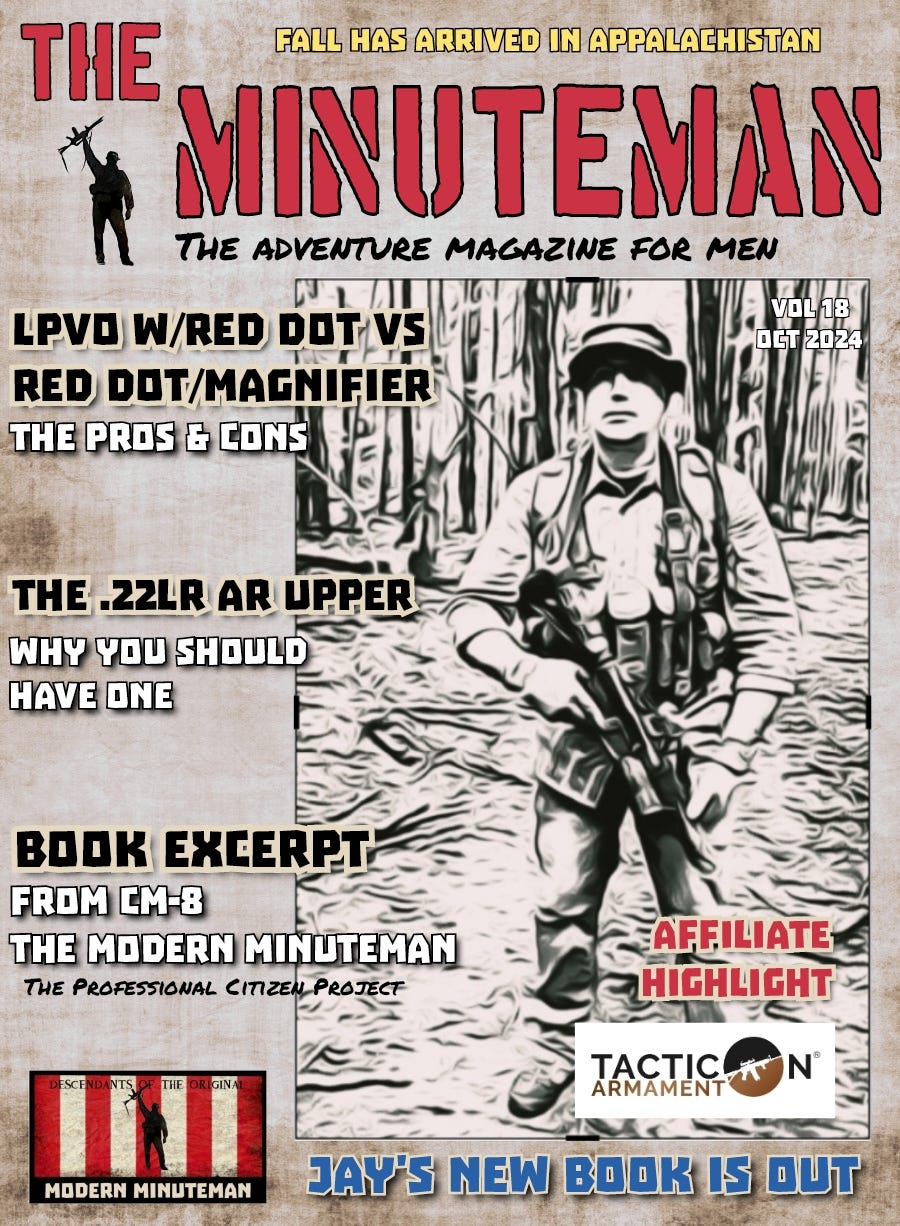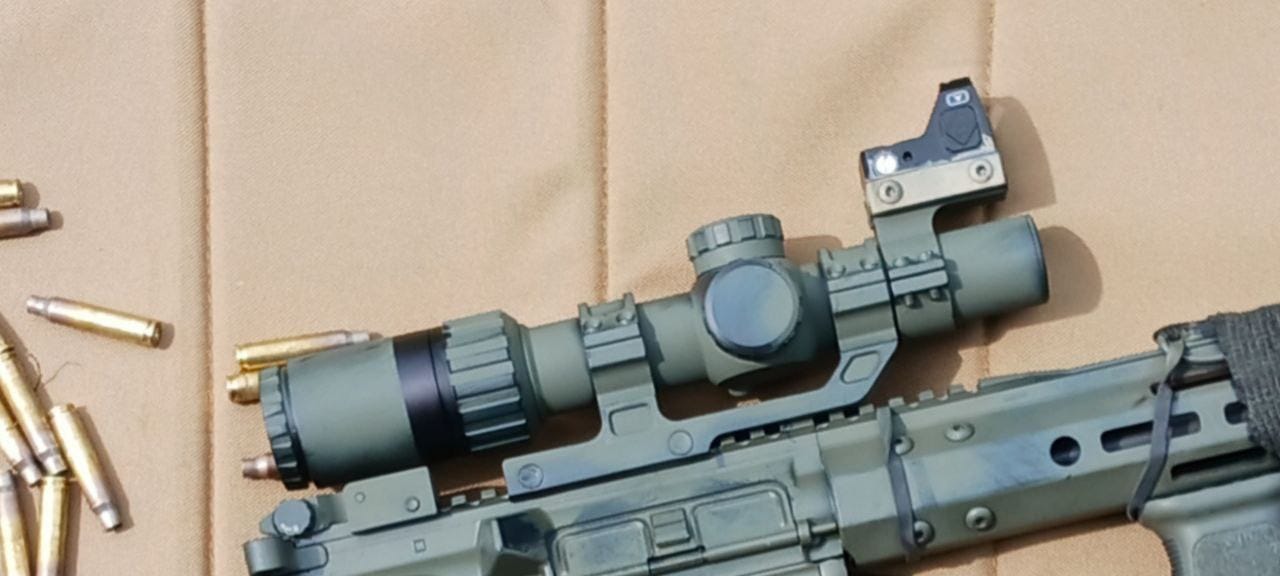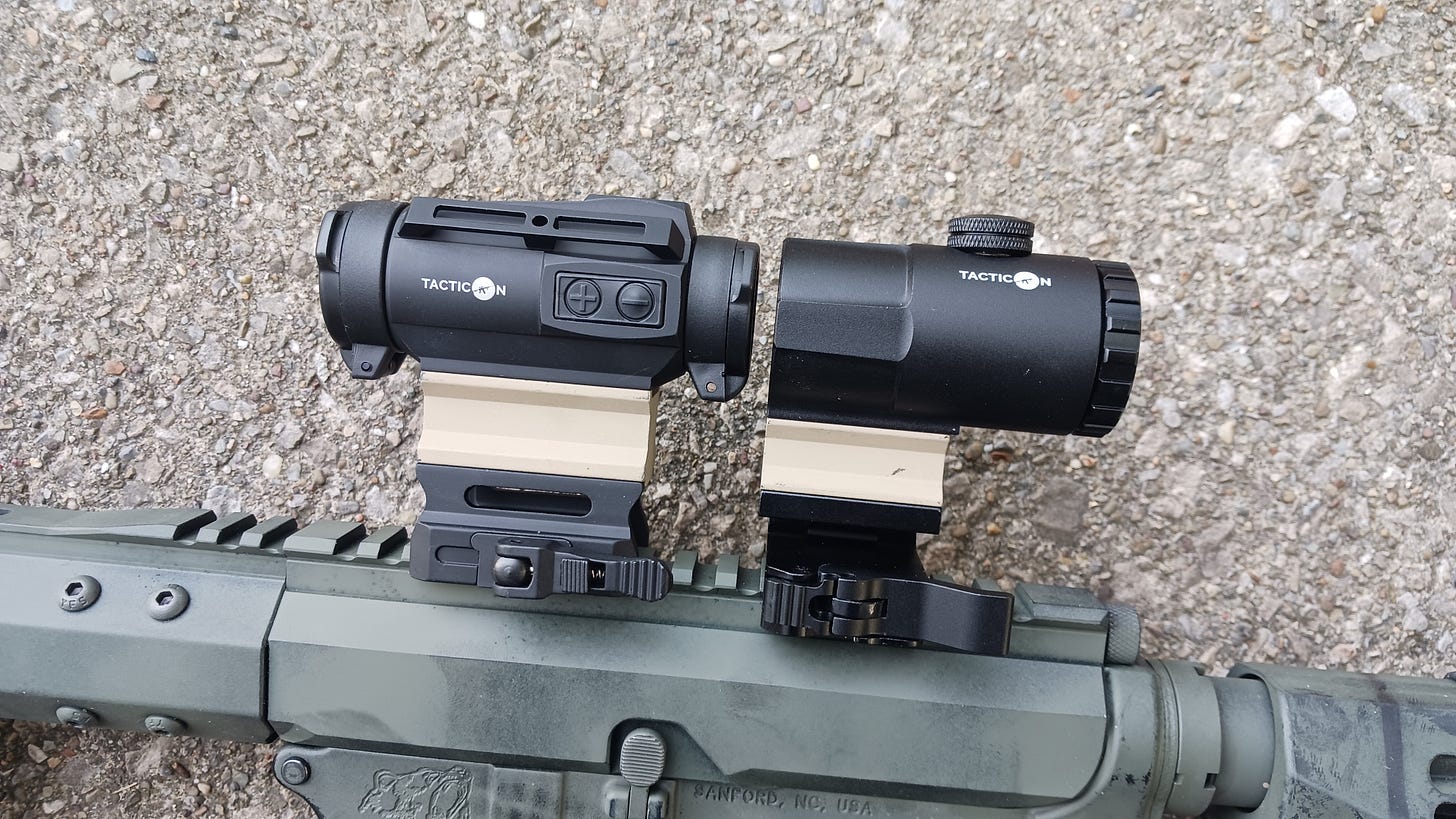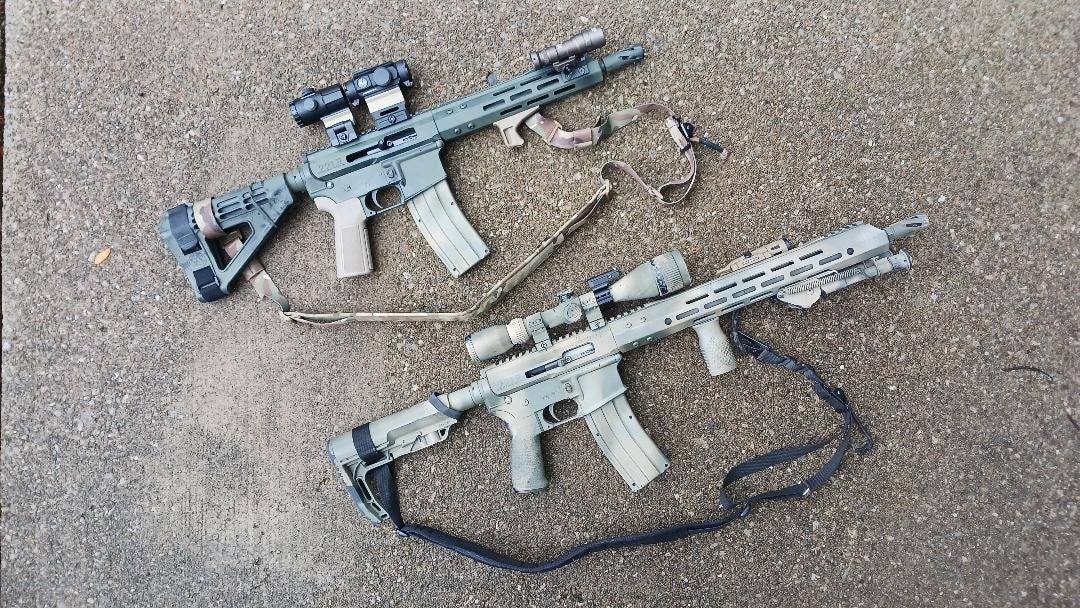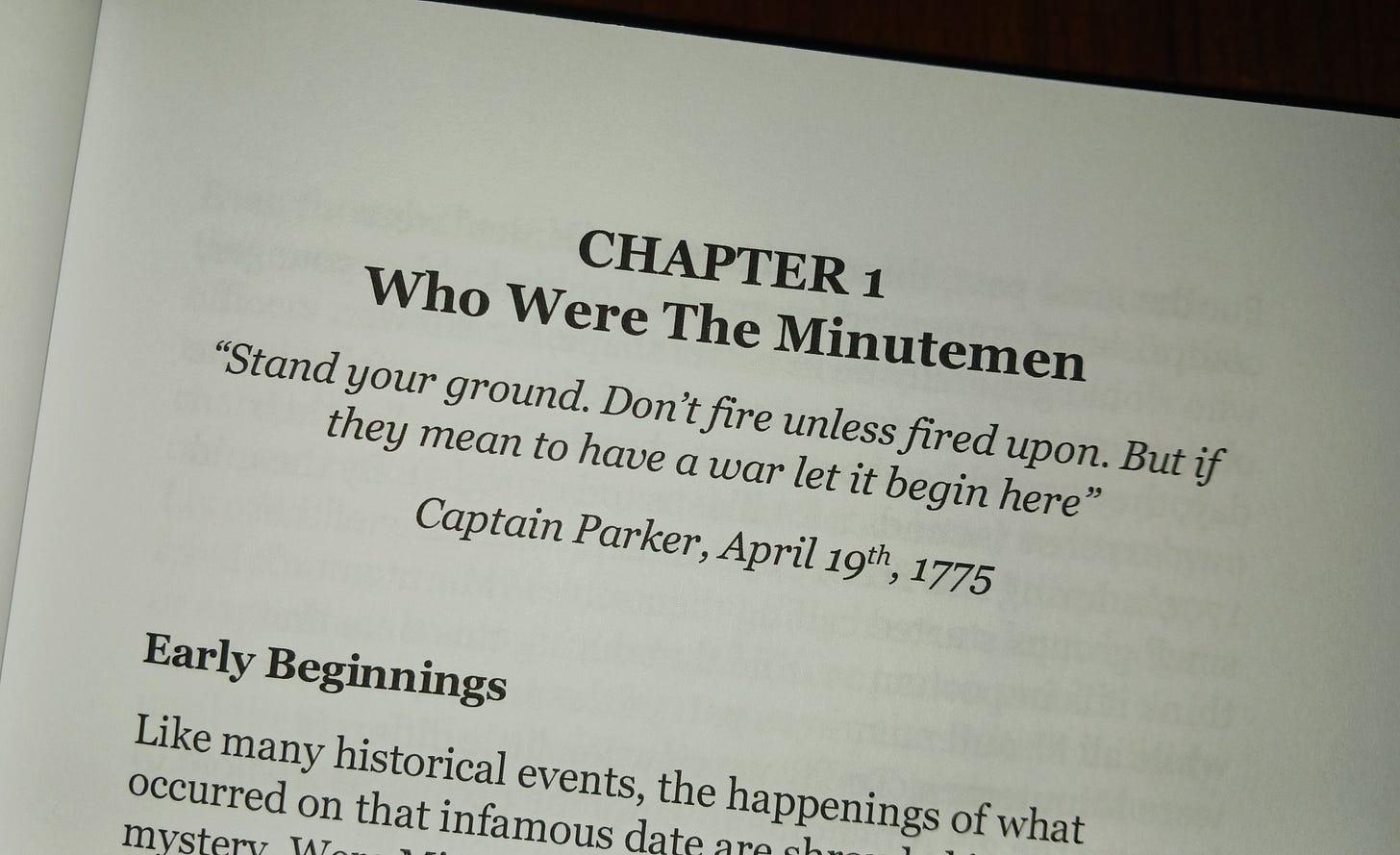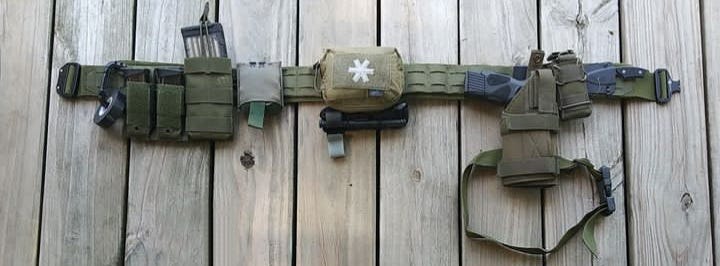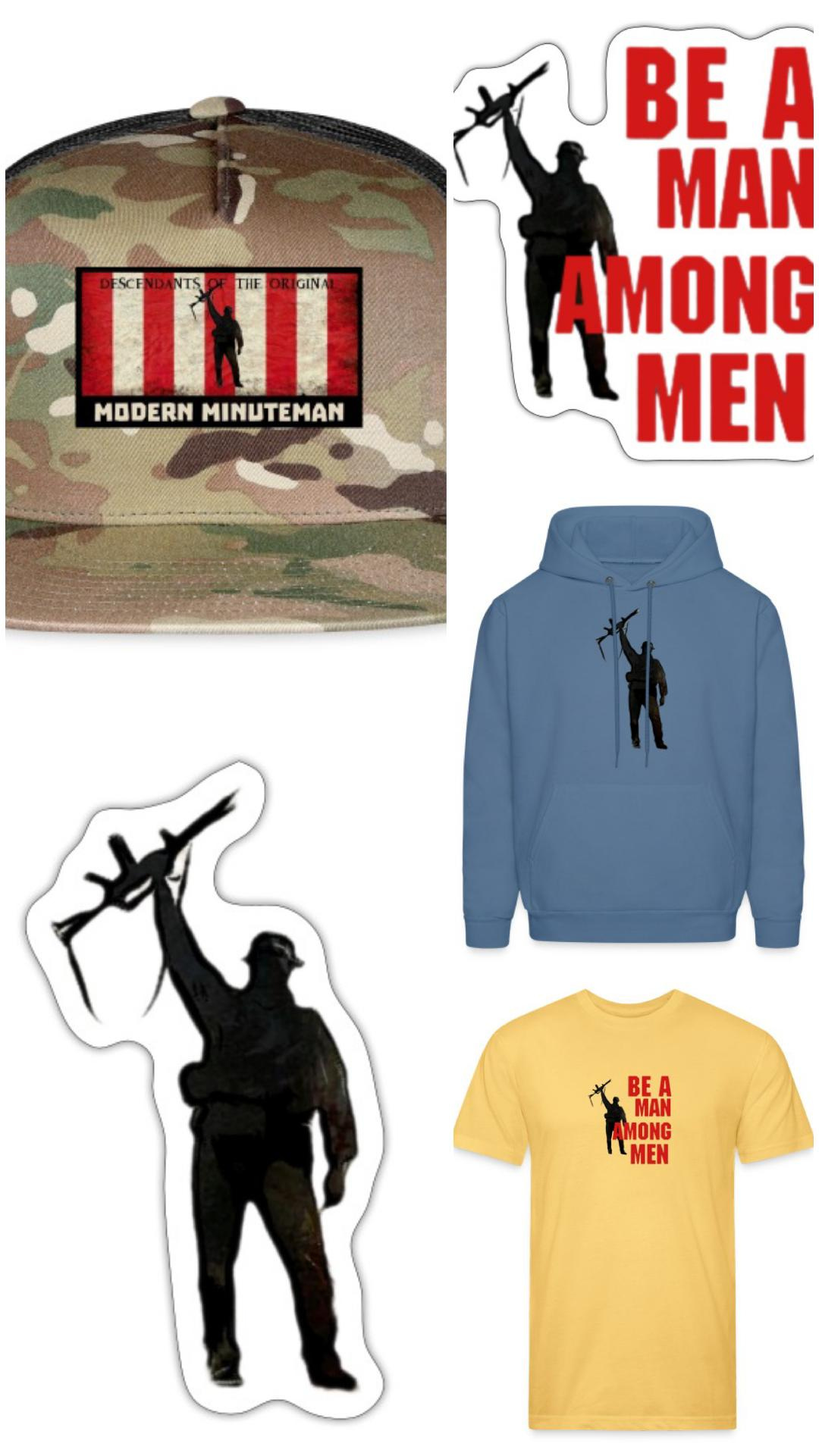THE MINUTEMAN Volume 18, Oct 2024
LPVO's and Red Dots, why .22lr uppers, and a new book...
Which optic setup is best, an LPVO w/Red Dot or a Red Dot w/Magnifier?
Over the last several years I’ve been able to use a lot of different optics setups on my rifles and, in my opinion, there are 2 ideal optic setups for the Minuteman Rifle (GPR-general purpose rifle).
The 1st setup is an LPVO with a piggybacked red dot.
LPVO’s
Pros: Adjustable magnification starting out at a 1x and going up to a 6, 8, or even a 10x. This adjustable magnification allows you to use it as a red dot set at the 1x or when you need the extra help of magnification you can simply crank it up to where it is comfortable for you. They also have a fairly generous amount of eye relief allowing some folks to keep both eyes open and for having greater peripheral vision. They will also have illuminated etched reticles so in low light conditions you can have the reticle illuminated or if the battery dies you still have a usable optic.
Cons: Weight and clarity on some lesser expensive models. LPVO’s have a lot going on and this equals an increase in weight over a lot of other magnified optic options. Clarity also seems to be a point brought up by many folks. I personally don’t notice this but many folks will use this as an argument against them.
The 2nd setup is the Red Dot/Magnifier combo.
Red Dot/Magnifier Combo
Pros: Easy to use, lots of eye relief when just using the red dot. Generally faster with follow up shots and target transitions. Ideal for heavy wooded environments and inside structures due to the increase in eye relief and increased peripheral vision that comes with that. With a higher riser mount most quality red dots can be used in conjunction with night vision for passive aiming. If you already have an existing red dot you can choose from several good magnifiers out there with the common ones being either 3x or 5x. When you need help positively ID’ing something, you just flip up your magnifier and you are good to go. Some magnifiers are easily removable and can also be used as a small monocular that can be carried in a pocket.
Cons: Magnifiers do add weight onto your rifle which takes it into the weight range of an LPVO. Red dots rely on batteries to create the dot, so if your battery goes so does your optic (you do have back up iron sights on your rifle, right). With the magnifier it does cause the red dot to bloom to a point where it can cover or obscure your target. Magnifiers also limit your eye relief taking it close to ACOG territory. So, you need to get right up on it for the best view.
I can’t tell you which is best for your own needs, but for me, in a rural or semi-rural environment, the LPVO is the best option. The ease of adjusting the magnification, the generous eye relief, the increased peripheral vision, and the ease of quick follow up shots and target transitions all just work for my needs. At 1x it works similar to a red dot and at max magnification works great for mid to longer range shooting. Now, with this said, I have recently added a piggy backed red dot on this for two reasons. One is that it allows me passive aiming under night vision, and two, it allows for a more upright shooting position which is nice for when contact is made. I have also found that by piggybacking the red dot, I can keep the magnification dialed up at 4 or 6x for PID while utilizing the red dot for closer up work. But I don’t discount the red dot/magnifier combo, in fact I’ve recently revisited the combo and decided to set up an AR pistol with it for use as a light camp gun. So far it is shining in this capacity!
The .22LR Upper for your AR and why you should have one.
I have gotten 2 different AR uppers chambered in .22lr this past year from Bear Creek Arsenal and I am loving the idea of having a dedicated .22lr upper for the AR platform.
We like to shoot .22, in fact we shoot it alot! So being able to simply swap uppers on any AR lower is advantageous for us. The 2 examples pictured above are Bear Creek Arsenal .22lr uppers (one is a 10.5” pistol upper and the other is a 16” rifle upper). Literally pop the pins on your AR, take off your centerfire upper and put the appropriate rimfire upper in its place, push your receiver pins back into place, put in a rimfire magazine and away you go. Perfect for plinking on the range, squirrel or other small game hunting, and even test your accuracy out at longer ranges. The side charging handle makes for easy charging (especially for youth) and with the occasional rimfire round misfire it makes for easy clearing.
For magazines we use the Black Dog AR15 .22lr 25 round magazines with our uppers and they also make a 10 round, commie conforming magazine, for those who live behind enemy lines.
I 100% trust and recommend these uppers to anyone looking to expand their .22lr inventory.
Book Excerpt from CM-8 The Modern Minuteman.
Early Beginnings
Like many historical events, the happenings of what occurred on that infamous date are shrouded in a bit of mystery. Were Minutemen there on that date in April, we may never really know. But what we do know is that the history of the Minutemen dates back into the 17th century where the Massachusetts Bay Colony found themselves constantly involved in war. From fighting with Indians to choosing sides between England and France. Many towns in Massachusetts organized and maintained their own military or militia units consisting of local citizens who would turn out in times of trouble. These folks would often act as an auxiliary to regular forces. When there was no longer any threat, these folks would go back to their families and everyday lives.
During this time local militia leaders would begin organizing smaller “companies” of men pulled from the local militias who could be so called first responders in times of trouble. These men were to be ready within 30 minutes notice. Later on, when faced with danger from the Wampanoag peoples led by King Phillip, such smaller units were told to be ready to march “at a moment’s warning…”. These smaller units would become known as “Minute Companies”…
To read more, check out the newest book release from The Professional Citizen Project, CM-8 The Modern Minuteman.
This month’s Affiliate Highlight is:
ABOUT TACTICON ARMAMENT
“Tacticon Armament is a combat veteran owned company that believes in outfitting both men and women with comfortable, effective, and combat ready tactical gear. Our catalog is a curated combination of original patented products and tactical gear enhanced to include features requested from our customers. We hope you enjoy all the effort we put forth to improve upon our products, our service and ourselves.”
My first experience with Tacticon Armament was several years ago with their original Battle Belt (today they call it the BattleBelt V1). This belt continues to be used today and has been a solid performer.
Today they still offer battle belts as well as plate carriers, armor, optics, complete IFAK’s, and many different accessories. Their customer service is top notch (which is a rarity today) and they are quick to ship products.
I give Tacticon Armament my seal of approval.
In other news…
The newest book from The Professional Citizen Project is now available! This one is called CM-8 The Modern Minuteman and it is squarely focused on Minuteman history, skills, and equipment all from my own experiences and lessons learned. This will be one you want to add to your library! Available at The Professional Citizen Project and on Amazon!
Minuteman Merchandise! Don’t forget we have Minuteman merchandise available to buy through our Spreadshop store. T-shirts, hoodies, mugs, stickers, hats, and more. Check it out here!




